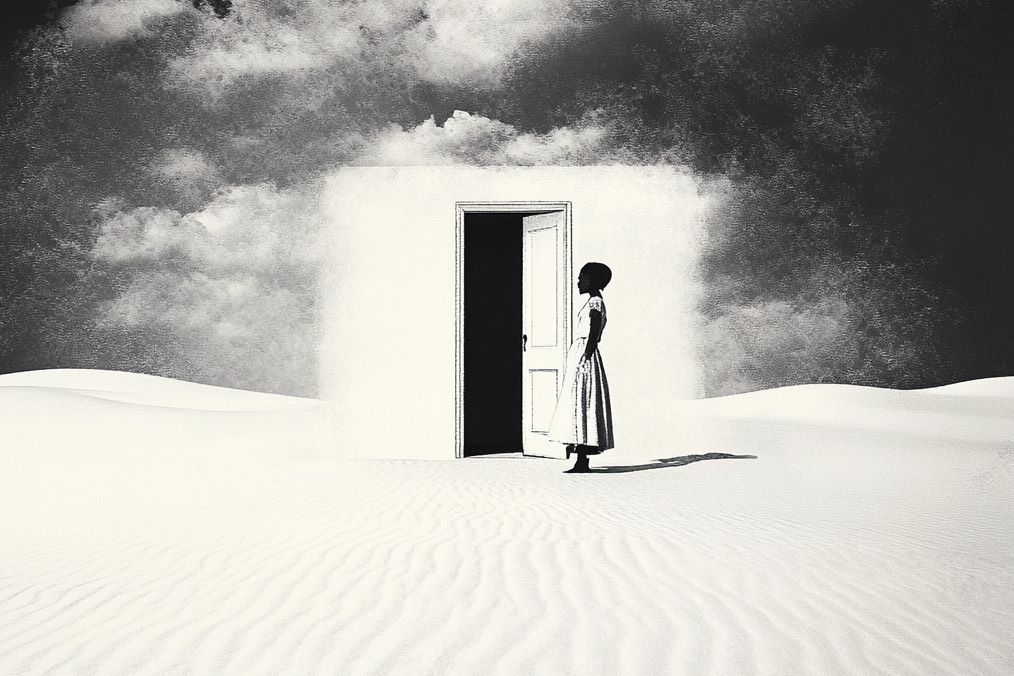Writing good descriptions draws readers into the vivid world of your story without overwhelming them with too much detail. Balancing clarity and mystery is essential to making readers feel like they’re in the scene with your characters, seeing, hearing, and feeling what they do. Here’s how to bring your descriptions to life and trigger a theater in the reader’s mind.
The Curse of Knowledge
The curse of knowledge, also known as cognitive bias or mind blindness, happens when someone mistakenly assumes that others have the same background knowledge needed to understand their message. Professors, for example, often struggle to simplify their subject for beginners because they know it so well that they’ve forgotten what it was like to encounter it for the first time. Writers can have the same issue. When you write fiction, you’re the expert on the story you’re telling, having spent so much time building the world and characters in your head. At the point of writing, no one knows your story better than you.
If you find yourself underwriting, it’s probably due to the familiarity with your story. As the creator, you know every turn, reasons, or behind-the-scenes detail, so some elements may feel too obvious to include. But the readers don’t have this insight. They’re piecing together the setting and context based on what’s on the page. Understanding your audience’s knowledge of the story allows you to anticipate and answer their questions in a way that’s clear and concise, giving them all the elements they need to visualize the scene.
Finding Balance Between Bare and Overly Detailed Descriptions
Descriptions can fall into two traps: too vague, or too explicit. White room syndrome is the former: when scenes lack grounding in physical reality, creating a disorienting experience for the reader. If your story feels boring, don’t speed it up; slow it down. It’s often because the readers are not immersed enough in your story. Situate the readers in time and space by showing the characters going through motions while interacting with their surroundings, adding sensory details to evoke a specific mood or atmosphere, involving the five senses.
But while grounding your scene in the reality of the world, don’t over-describe. Too much detail flattens objects, stripping them of mystery and depth. Make the scene realistic enough while leaving something to the imagination. Think of description as focusing a camera lens, telling the onlooker where and how he should draw his attention. Don’t tell us the character is staring at a wall. Show him staring at something on the wall: a crack, an ant, or peeling wallpaper. Concrete, specific details offer more insight into a place than broad descriptions like “old” or “dirty.” Evocative details—shuttered windows, a bloodstain on the tiles, or an echo that follows every step—can communicate a place’s essence without drowning the reader in information overload.
Bring Objects to Life with Odd, Unfamiliar Details
Abstract adjectives like “beautiful” or “characterful” mean little to anyone but the writer. For inspiration, look to travel writing, which frequently uses vivid, sensory details:
“To say a building is “old” isn’t good enough; explain the colours, the peeling stucco, the elaborate, angular finishes on windowsills, the cleaning lady in a faded blue smock who was leaning out of a second-storey window with a cigarette dangling from her mouth. There is a thin line between elaborate, colourful, evocative writing and pretentious tosh, but it’s better to lean towards the pretentious tosh side of the spectrum than to be dull and presumptuous.”
Benji Lanyado, Guardian writer and blogger.
Focus on writing odd details in a simple language rather than something abstract/vague in an elaborate prose. Make your setting intriguing by using artistic incongruity: combine adjectives and nouns that are not usually seen together, like a whispering clock, frozen flames on the mountainside, or a cuddling rhinoceros. Experiment with flipping perspectives, making strange things ordinary and ordinary things strange: an overworked vampire, a dull mirage, or an ominous supermarket.
Avoiding the Dreadful Universe of Absolute Clarity
Avoid the opposite end of the spectrum: the universe of absolute clarity. When every aspect of a scene is detailed as if from a school textbook, it leaves nothing to the imagination. Over-clarity creates “a flat and discontinuous universe” where there’s “nothing behind the surface – no interior, no secrets, no hidden motives. A universe of absolute clarity discourages the explorer.” (Alain Robbe-Grillet) It’s one reason why I prefer magical realism over exhaustive fantasy novels: an encyclopedic description of a fantastic creature removes the magic and wonder of them. Don’t give me a pink-scaled dragon with wings; give me a flying dog.
Filtering Description Through Emotion and Perspective
Add emotion when describing an event. Don’t just say “A dog sat at the end of the road.” Filter it through the character’s mindset to add meaning and give readers the possibility to create a deeper connection with an action: “The dog sat silently at the end of the road, watching her. She remembered her mother’s warning: a dog that doesn’t bark is already listening to something you can’t hear.”
Writing rich, compelling description means balancing clarity with mystery, specific detail with suggestive depth. Done well, it can pull readers into a living, breathing world, engaging equally their senses, emotions, and curiosity.
